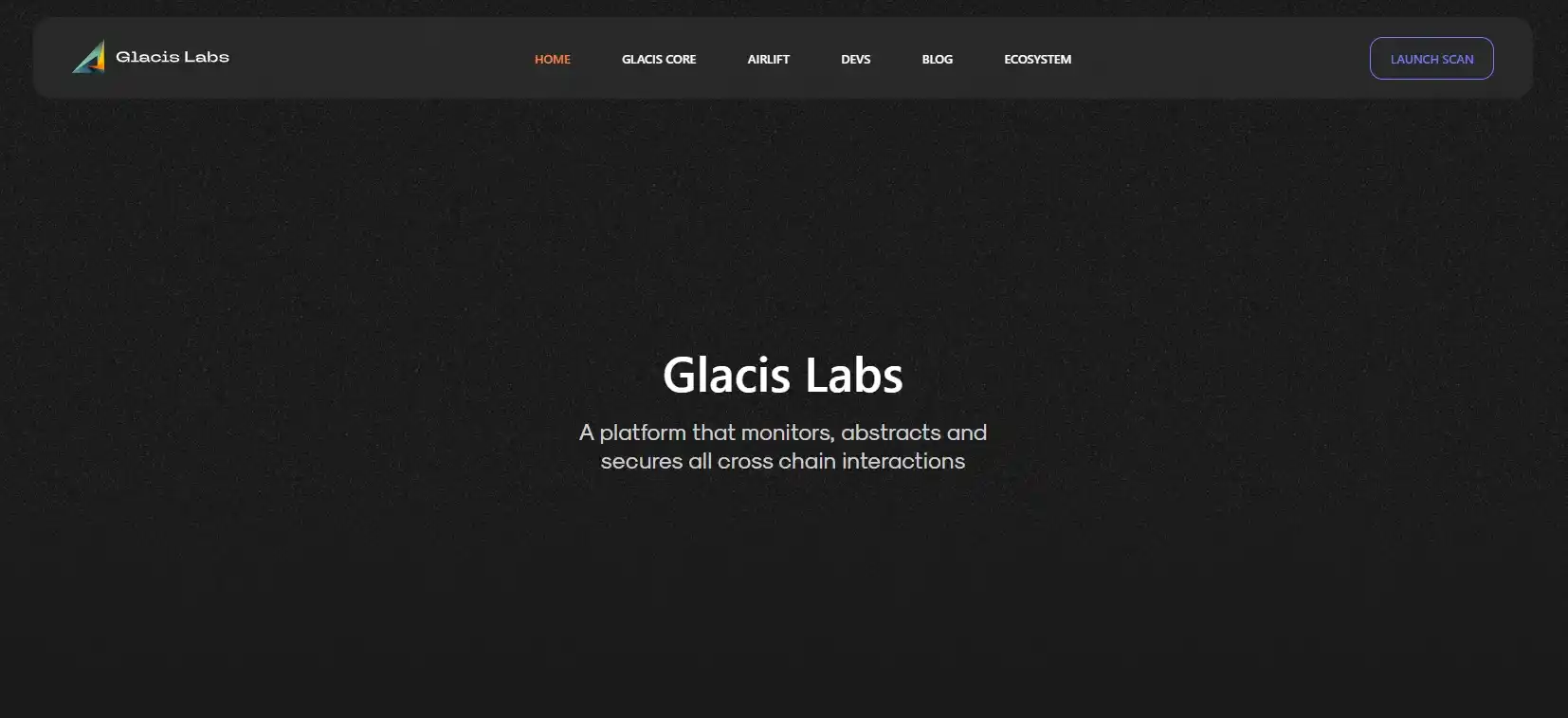The decentralized technology sector faces a growing number of threats related to vulnerabilities in smart contracts and cross-chain interactions. Traditional security approaches often fail to keep pace with the evolution of attacks, leading to significant financial losses.
The Glacis project offers an innovative solution to this problem by acting as a specialized security router for Web3. It provides centralized control over cross-network interactions, allowing developers to proactively protect their applications from unauthorized calls and malicious data, creating a more reliable infrastructure for the future internet.
Contents:
- Security Crisis in Web3: The Need for a New Approach
- Glacis as a Security Router: Fundamental Principles
- Key Components of Glacis Architecture
- Benefits for Developers and Users
- Integration and Future Development of the Project
- Conclusion
Security Crisis in Web3: The Need for a New Approach
The blockchain ecosystem and decentralized applications continue to face numerous incidents related to vulnerability exploitation. The problem is exacerbated by the development of cross-chain interaction, where transactions pass through multiple networks, expanding the attack surface for potential threats.
Existing tools are often reactive in nature, activating only after a threat is detected. This creates an urgent need for proactive solutions capable of filtering incoming traffic at the application level. Glacis offers an architectural layer that prevents malicious calls from reaching critical dApps components.
Glacis as a Security Router: Fundamental Principles
The main concept of the project is to position Glacis as a specialized router designed for secure data transmission between different blockchain networks. Its fundamental task is to verify and filter all incoming and outgoing transactions based on predefined access policies. The operating principle resembles traditional network routers but adapted for a decentralized environment.
Key system operating principles include:
- Security Policy Priority: All cross-network messages must comply with ACL rules defined by the developer.
- End-to-End Validation: Each transaction is verified before it reaches the target smart contract.
- Universal Interaction: Ensuring secure data exchange between any connected blockchain networks.
- Decentralized Architecture: Routing and filtering are performed by a network of independent validators.
Thanks to this approach, Glacis creates a protected communication layer that filters out unwanted traffic and directs only legitimate transactions to their final destinations. This enables controlled and secure communication channels for decentralized applications operating in a multi-chain environment.
Key Components of Glacis Architecture
The project's architecture is built around several interconnected modules that form a comprehensive protection system. The foundation consists of Gateways, responsible for receiving and transmitting messages between chains, and the Router, which contains filtering logic. Security policies (ACL) define transaction verification rules, providing flexible access parameter configuration.
To ensure maximum fault tolerance, the system uses a decentralized network of validators that confirm routing correctness. These components function in coordination, providing developers with a powerful tool for configuring application security without the need to modify contract source code.
Benefits for Developers and Users
Implementing the Glacis infrastructure solution brings tangible benefits to all participants in the decentralized ecosystem. Developers receive a powerful yet easy-to-use tool for implementing complex security rules, significantly reducing operational risks and costs. For end users, this means increased confidence in the safety of their assets and data when interacting with dApps.
Key platform advantages include:
- Proactive Risk Reduction: Filtering potentially dangerous transactions before they reach the smart contract.
- Significant Resource Savings: Reducing costs for vulnerability fixes and compensation for hacking losses.
- Accelerated and Simplified Development: Intuitive security policy configuration mechanism without code rewriting.
- Building Sustainable Trust: Reliable protection becomes a competitive advantage for any decentralized application.
Thus, the platform creates a safer and more predictable environment for creating and using Web3 products. This contributes not only to the protection of specific applications but also to strengthening the reputation of the entire industry as a whole, minimizing high-profile incidents with fund losses.
Integration and Future Development of the Project
Glacis integration into existing blockchain infrastructure is organized as simply as possible. Developers only need to register their smart contracts in the router network and configure the necessary access control policies through a convenient interface. This process doesn't require deep changes to application source code, significantly accelerating protection deployment.
Comparative analysis demonstrates key differences between the Glacis approach and traditional security methods:
| Criterion | Traditional Audits | Glacis |
|---|---|---|
| Protection Approach | Reactive, post-audit | Proactive, preventive |
| Rule Flexibility | Limited, requires code changes | Dynamic configuration via ACL |
| Cross-Chain Security | Requires separate solutions | Native support |
| Protection Updates | Complex, requires rewriting | Instant, through policy changes |
The team is actively developing the platform, expanding the list of supported networks and implementing new filtering mechanisms. The project roadmap includes strengthening validation decentralization and adding support for additional cross-network interaction standards, which will strengthen Glacis' position as a fundamental element of Web3 infrastructure.
Conclusion
Glacis represents a strategically important project that forms a new security standard in Web3. As a specialized router, it creates a protected layer for cross-network interaction, allowing proactive threat filtering before they reach smart contracts.
The platform effectively solves key cross-chain security problems, offering developers a simple yet powerful tool for configuring access policies. With the development of multi-chain architecture, the importance of such solutions will only increase, making Glacis a fundamental component of next-generation infrastructure for decentralized applications.





